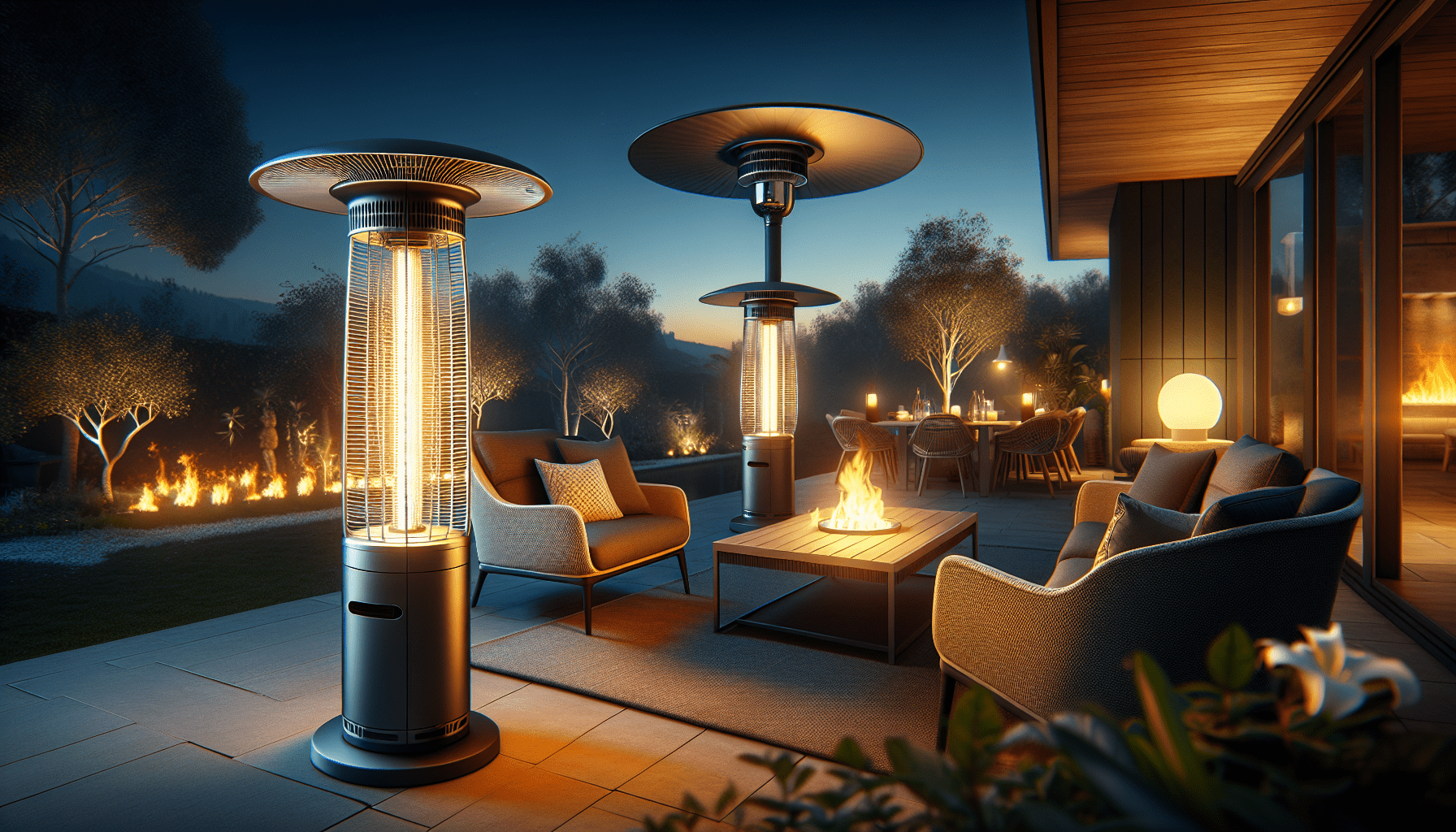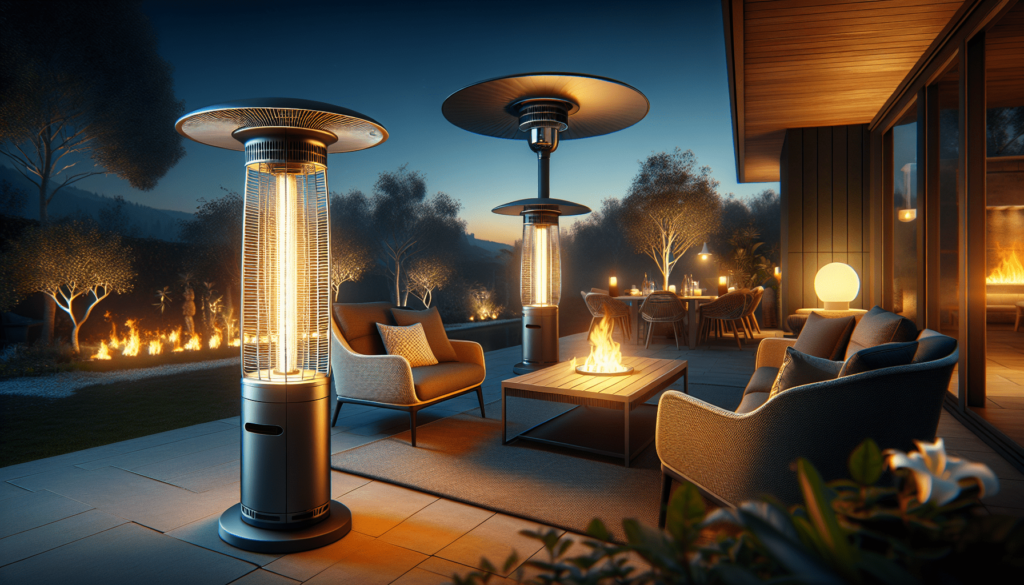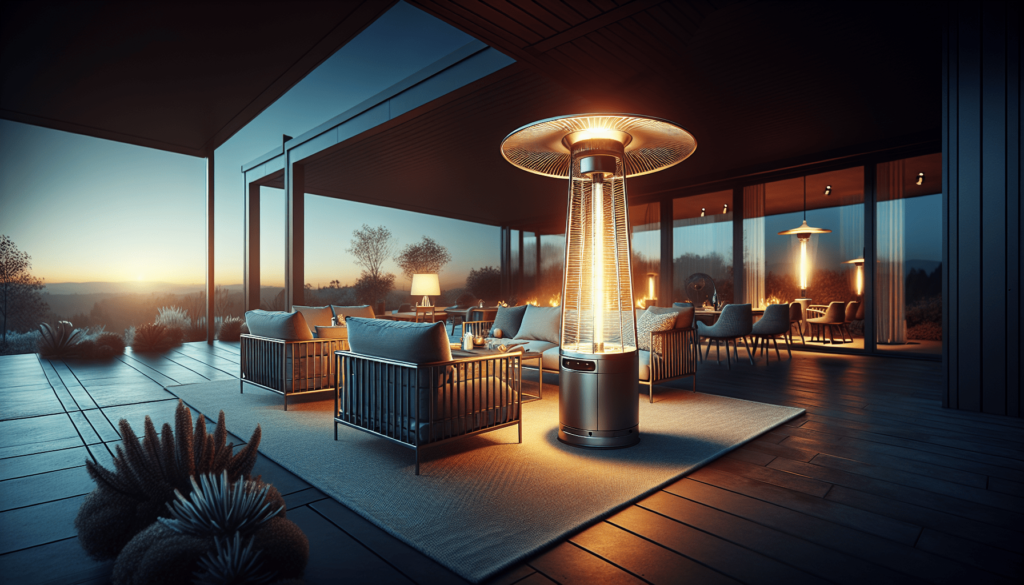
Have you ever found yourself wishing you could spend more time outdoors as the days grow shorter and the nights cooler? A patio heater might just be the answer to making the most of your outdoor space, even when the temperature dips.
What is a Patio Heater?
A patio heater is a source of outdoor warmth that typically uses propane, natural gas, or electricity. It’s designed to radiate heat in an open space, allowing you to enjoy the outdoors even when the temperature drops. They come in various styles and sizes, making it easy to find one that suits your particular needs and aesthetic preferences.
Types of Patio Heaters
When considering a patio heater, it’s important to familiarize yourself with the different types available. Each type has its pros and cons, depending on your space and heating needs.
Propane Patio Heaters
Propane heaters are portable and easy to use. You just need to attach a propane tank, and you’re good to go. They provide immediate heat and can be easily moved around your patio.
-
Advantages:
- Portability
- Quick setup
- High heat output
-
Disadvantages:
- Requires propane tank changes
- Can be more expensive in the long run due to fuel costs
Natural Gas Patio Heaters
Natural gas heaters are a more permanent solution, often requiring professional installation. They are connected to your home’s natural gas line, providing a constant supply of fuel.
-
Advantages:
- Consistent fuel supply
- No need to change tanks
- Lower operational cost
-
Disadvantages:
- Requires professional installation
- Less portable
Electric Patio Heaters
Electric heaters are convenient and simple to use. You just plug them in, and they start heating. They do not emit fumes, making them ideal for enclosed spaces.
-
Advantages:
- Easy to use
- No fumes
- Some models are suitable for enclosed spaces
-
Disadvantages:
- May require a dedicated outlet
- Can be less powerful than gas heaters
Choosing the Right Patio Heater
Selecting the right patio heater involves considering your space, budget, and heating needs. Here’s a handy table to help you compare the main features of each type:
| Feature | Propane | Natural Gas | Electric |
|---|---|---|---|
| Portability | High | Low | Medium |
| Heat Output | High | High | Medium to High |
| Installation | Simple | Professional Required | Simple |
| Operational Cost | Higher (Fuel Costs) | Lower (Natural Gas) | Medium |
| Emissions | Some Fumes | Some Fumes | No Fumes |

Patio Heater Brands to Consider
Various reputable brands offer high-quality patio heaters. Here are a few to consider:
Propane Heaters
- Hiland: Known for durability and reliability, Hiland propane heaters are a popular choice for their sturdy construction and strong heat output. The Hiland HLDS01-WCGT is a standout model.
Natural Gas Heaters
- Bromic: Bromic heaters, like the Bromic Platinum Smart-Heat, are known for their sleek design and efficiency. They can cover large areas and are often used in commercial settings.
Electric Heaters
- Infratech: For those considering electric heaters, Infratech offers models like the Infratech WD-Series, which are praised for their performance and minimal maintenance requirements.
Installation and Safety
Installing a patio heater requires careful consideration to ensure safety and efficiency. Here are some tips:
Positioning Your Heater
Place your heater in a spot that allows even distribution of warmth. Keep it away from flammable materials and ensure there is adequate ventilation if using gas heaters.
Safety Precautions
- Never leave the heater unattended: Always turn off the heater when not in use.
- Follow manufacturer guidelines: Read the manual thoroughly and adhere to all suggested safety measures.
- Check for gas leaks: Regularly inspect hoses and connections if you are using a gas heater.

Maximizing the Use of Your Patio Heater
Now that you’ve chosen your heater and have it set up, here are some tips on how to make the most of it.
Creating a Cozy Atmosphere
Combine your heater with outdoor furniture and soft furnishings like cushions and blankets to create a welcoming atmosphere. String lights or lanterns can add a magical touch to evening gatherings.
Using Windbreaks
Wind can easily disrupt the effectiveness of your heater. Consider using screens, walls, or even tall plants to create a windbreak around your patio area.
Maintenance and Troubleshooting
Keeping your patio heater in good condition ensures longevity and optimal performance. Here’s a brief guide on maintaining different types of heaters:
Propane Heaters
- Regularly clean the burner: Dust and debris can affect the burner’s efficiency.
- Inspect hoses and fittings: Check for signs of wear and tear and replace if necessary.
- Store properly: When not in use, store your heater in a dry, sheltered place.
Natural Gas Heaters
- Schedule annual inspections: Have a professional inspect the gas line and connections.
- Clean regularly: Maintain cleanliness to prevent dust buildup on the burner and reflective surfaces.
- Check for blockages: Ensure that the gas passage is clear and unobstructed.
Electric Heaters
- Wipe down surfaces: Dust the heater regularly to maintain efficiency.
- Inspect electrical connections: Check for frayed wires or faulty plugs.
- Store in a dry place: Protect your heater from moisture when not in use.
Troubleshooting Common Issues
Here are some common issues and quick fixes for patio heaters:
| Issue | Possible Cause | Solution |
|---|---|---|
| Heater Won’t Ignite | Gas supply issue | Check gas line or tank |
| Low Heat Output | Dirty burner | Clean the burner |
| Flickering Flame | Wind interference | Use a windbreak |
| Electrical Failure | Power supply issue | Check outlets and cords |
Extending the Outdoor Season with a Patio Heater
A patio heater opens up countless possibilities for enjoying your outdoor space longer into the fall and even winter months. Here are some suggestions:
Fall Gatherings
Host fall dinners or cozy gatherings around the heater. The warmth will make the dropping temperatures feel more inviting.
Winter Wonderland
If you live in an area with milder winters, a patio heater can keep you outside even during colder months. Add a fire pit and some wool blankets for an added layer of warmth.
Outdoor Projects
Extend your gardening season by using the heater to keep yourself warm while working on late-season projects.
Sustainability Considerations
When using a patio heater, it’s worth considering the environmental footprint. Here are a few tips:
Efficient Use
Turn the heater off when not needed and use it only in the immediate area where people are present.
Fuel Choices
Opt for natural gas or electric heaters if you have access to these energy sources, as they can be more efficient and have a smaller carbon footprint compared to propane.
Eco-Friendly Brands
Look for brands that emphasize sustainability, such as Bromic, which offers models designed for high efficiency and lower environmental impact.
Conclusion
Using a patio heater to extend your outdoor season is a practical and enjoyable solution. By carefully choosing the right type of heater and following safety and maintenance guidelines, you can create a warm and inviting outdoor space that you and your guests will love. Whether you’re hosting fall gatherings, extending your gardening season, or simply enjoying a quiet evening outside, a patio heater is a valuable addition to your home.
So, have a look at your outdoor area and imagine how a patio heater can transform it into a cozy retreat, regardless of the weather. Your outdoor season doesn’t have to end when the summer does. It can be as long and inviting as you want it to be.




